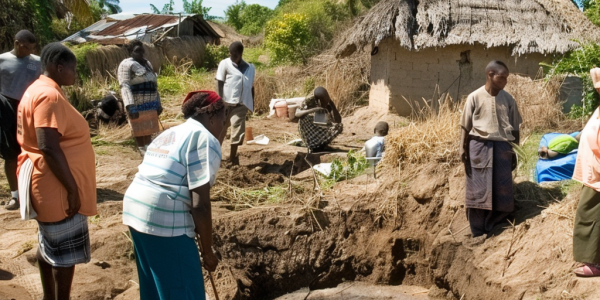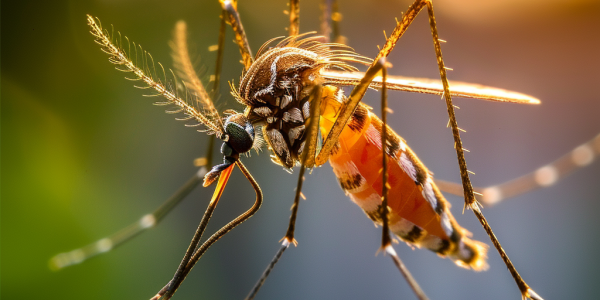Beware of Health Halos in Your Food Choices
Courtney Smith, a registered dietitian, warns of ‘health halos’ in foods that are marketed as healthy but hide harmful ingredients. Granola and granola bars may contain added sugar, while trail mix often includes candy and sweetened nuts. Smith recommends opting for nutrient-dense snacks like fruits with healthy fats or proteins instead.
The Healing Power of Touch: How Affectionate Contact Can Improve Health and Happiness
Discover the incredible health benefits of affectionate touch according to a recent review of over 200 studies. From reducing pain and anxiety to promoting healthy weight gain in newborns, the power of touch is undeniable. Whether it’s a hug from a loved one or a gentle massage, the positive impact on physical and mental well-being is clear.
Study Suggests IVF Babies May Have Higher Risk of Childhood Leukemia
Recent research suggests that babies born through IVF may have a higher risk of developing childhood leukemia. However, experts caution that the technology itself may not be the direct cause, as older and less fit couples who undergo IVF treatment may have a higher chance of having children with leukemia in general. With a success rate of up to 40%, IVF remains a viable option for many couples. Charities reassure parents not to be overly alarmed, as the overall risk of children conceived via IVF developing leukemia is still low. Further research is needed to fully understand the potential implications of IVF on childhood leukemia risk.
The Benefits of Walking and Diverse Movement Patterns for Overall Well-Being
Discover the health benefits of walking and how achieving 2,300 steps per day can lower the risk of cardiovascular disease-related mortality. Despite its advantages, some experts argue that walking may not qualify as high-quality exercise. Learn about the three essential forms of movement necessary for overall well-being and why incorporating diverse movement patterns into daily routines is crucial for achieving functional fitness.
Squirrels May Have Spread Leprosy to Humans in Medieval Times, Study Suggests
Researchers have found evidence suggesting that squirrels may have played a role in spreading leprosy to humans during medieval times. The study analyzed human and red squirrel bones from archaeological sites in Winchester, southern England, identifying closely related strains of the bacteria that causes leprosy. This groundbreaking research sheds new light on the complex history of leprosy and highlights the potential role of squirrels in disease transmission.
Climate Change Amplifying Risk of Malaria Resurgence, Say Specialists
Climate change is amplifying the risk of a resurgence of malaria, with changing weather patterns creating a more favorable environment for mosquitoes to thrive. The surge in malaria cases in Mozambique’s Manica province highlights the ongoing threat posed by this disease, exacerbated by the impact of extreme weather events and food insecurity. As climate change drives environmental changes, the risk of mosquito-borne infections is expected to escalate, emphasizing the need for a comprehensive approach to disease control and prevention.
Navigating the Salt Debate: Balancing Flavor and Health
Learn about the relationship between salt consumption and health, including the risks of hypertension and the importance of moderation. Discover how balancing salt intake can improve overall well-being and reduce cardiovascular health risks.
Sarasota County Gears Up for Mosquito Season
Sarasota County Mosquito Management is preparing for the upcoming mosquito season, emphasizing the importance of proactive measures to control mosquito populations. With the rapid reproductive cycle of mosquitoes and the increased risk of mosquito-borne illnesses, residents are urged to eliminate standing water sources and take precautions such as wearing repellent and long clothing. The management team is utilizing innovative methods like drone spraying and chicken surveillance to manage mosquito populations, but collective effort from the public is essential to minimize the threat.
Robotic Technology Revolutionizes Hysterectomy Recovery in South Yorkshire
Read about Katie Titman’s awe-inspiring recovery after undergoing a robotic-assisted hysterectomy in South Yorkshire. The innovative technology allowed for a quicker and smoother post-operative period, highlighting the efficiency and precision of robotic systems in women’s health. Consultant gynaecologist Karim Abdallah praised the procedure as a significant advancement, offering hope for young women battling gynaecological conditions like endometriosis.
New Treatment for African Spitting Cobra Venom Discovered
Groundbreaking research led by Professor Nicholas Casewell and colleagues unveils a new method to combat the devastating effects of African spitting cobra venom. By using a repurposed small molecule drug called varespladib, the team was able to block a key toxin in the venom responsible for dermonecrosis, preventing rapid destruction of skin, muscle, and bone. This breakthrough offers hope for improving treatment of tropical snakebites and preventing debilitating tissue damage in thousands of snakebite victims annually.










